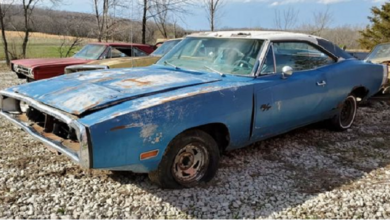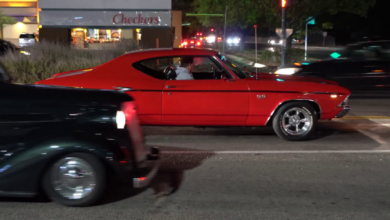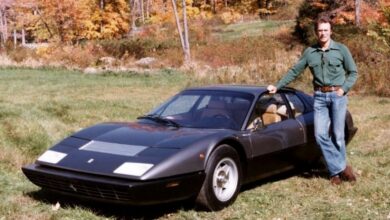C-Body Mopar Muscle Cars: Size does Not Dilute Potency
1968 Plymouth Sport Fury 440 4-Speed Convertible
This is one of the rarest Mopar muscle cars—ever. A total of 2,489 Sport Fury convertibles were sold in 1968, and only 497 were optioned with the A833 four-speed manual transmission, like this one.
The Commando V8 badge on the side means this Sport Fury was more than just standard bucket seats, though. Three engines were available with the Commando V8 package: the 383 with either a two- or four-barrel carburetor, and the Super Commando 440 four-barrel. A quick inspection of the VIN shows an L in the engine code slot, meaning this Sport Fury convertible was one of the 60 or 70 four-speed convertibles with the big-boy 440 putting down a healthy 375 hp.
1969 Dodge Polara 500 383 4-Speed Convertibl
The Dodge Polara was what low-priced cars wanted to be when they grew up, combining luxury and muscle. 1969 marked the start of what Dodge referred to as fuselage-styling on the Polara and the switch to side-by-side dual headlamps as opposed to stacked headlamps.
1969 was also the last year any fullsize Chrysler car was available with a 4-speed manual transmission, as this car is equipped. The 500 in the name is not the engine size, that was the name given to sporty version of the Polara equipped with standard front bucket seats.
970 Plymouth Sport Fury S/23
In 1970, buyers had many different Fury models to choose from: I, II, III, Sport Fury, Sport Fury GT, and this, the Sport Fury S/23. The S/23 package, only available in 1970, was an insurance buster; it had all the good looks of the Sport Fury GT without the high insurance premiums of the 440 Super Commando V8 and was $546 less at $3,379.
The 1970 Sport Fury, along with the standard front bucket seats, was set apart from lesser Fury models with its new, full-width chrome loop grille and hide-away headlamps. Unlike the headlamp doors used on the Dodge Charger, the electric-operated Plymouth covers were diecast metal and were a first for any Plymouth vehicle. Further separating the S/23 and GT from the standard Sport Fury was the 3M reflective strobe stripe that wrapped around the whole car and was billed as a safety feature.
1971 Plymouth Sport Fury GT 440
The Sport Fury GT 440 was the biggest member of the Plymouth Rapid Transit System, which promised 14-second quarter-mile times across the line, and for 1971, they made better on that promise by offering the 440 Super Commando V8 making 375 hp that was not available in the 1970 Sport Fury GT. 1970 GTs had the station wagon 440, making a paltry 350 hp.
The differences in power came from camshaft timing, carburetor jetting and the freer-flowing high-upswept exhaust manifolds. Unlike pre-1970 Sport Furys, the only transmission available was the 727 TorqueFlite three-speed automatic, but buyers could at least option a console shifter.









I didn’t know that.